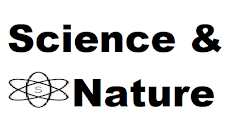In a poignant moment for space exploration and science, NASA has acknowledged that Voyager 1 — the most distant human-created object in space — is probably sending its last words back to Earth. The information that it transmitted was both stunning and sad: the 46-year-old probe is no longer able to transmit useful scientific data. All the worst fears have been realized — Voyager 1 is finally falling silent.
A Faraway Pioneer Coming to the End
Voyager 1 was never meant to make it this far. Launched in 1977 on a five-year mission to the planets Jupiter and Saturn, it has long outlived that. Across the decades, it kept sending back pioneering data - our first close-up photos of the giant planets and their moons, and subsequently, vital measurements from the boundary of the solar system and beyond.
But all great things must end — even legends.
Voyager 1 had been delivering scrambled data in recent months, or in some instances, nothing. NASA engineers spent countless hours troubleshooting the issue, even constructing commands with ancient systems and technology. But in its last briefing, the space agency confirmed that the main communications system and data-handling hardware on the spacecraft have decayed to the point of no return.
The Last Transmission
The last packet of data Voyager 1 transmitted was received on Earth after going almost 15 billion miles across space. It took more than 22 hours to arrive. Buried in that tiny stream of ones and zeros was verification that the onboard systems have become too unstable to maintain scientific operations. Radiation, old hardware, and plain old wear and tear from almost five decades in space had their effect.
The message was basically Voyager's last whisper — an interstellar goodbye from a robotic spacecraft that has gone farther than any human-made thing ever has.
A Legacy That Will Outlive Us All
In spite of the disappointment, Voyager 1's mission is nothing less than miraculous. In 2012, it became history's first spacecraft to penetrate interstellar space and gave humans its first direct measurements of the space between the stars. It demonstrated that our reach could be far greater than the solar system and was a silent representative of Earth carrying the Golden Record — a human time capsule of music, images, and greetings spoken in 55 languages.
Though Voyager 1 no longer operates as a scientific tool, it will continue its quiet journey among the stars, perhaps for billions of years. It may never run into another civilization — but if it ever does, it takes with it a message of inquiry, peace, and human curiosity to explore.
A Salute to a Spacefaring Icon
NASA will continue to monitor Voyager 1’s weak signal for as long as possible, but the days of meaningful data are over. It’s a poignant moment not just for scientists, but for all of us. Voyager 1 represented more than a mission — it was a symbol of human ambition, wonder, and the quest to understand our place in the universe.
As we move ahead to missions in the future, such as the James Webb Space Telescope and interstellar probes currently on the drawing boards, Voyager 1's legacy will be remembered and motivate. Its last message is a reminder that every trip, no matter how far or long, has a conclusion — and that even in silence, some voices remain forever.


.jpg)


0 Comments